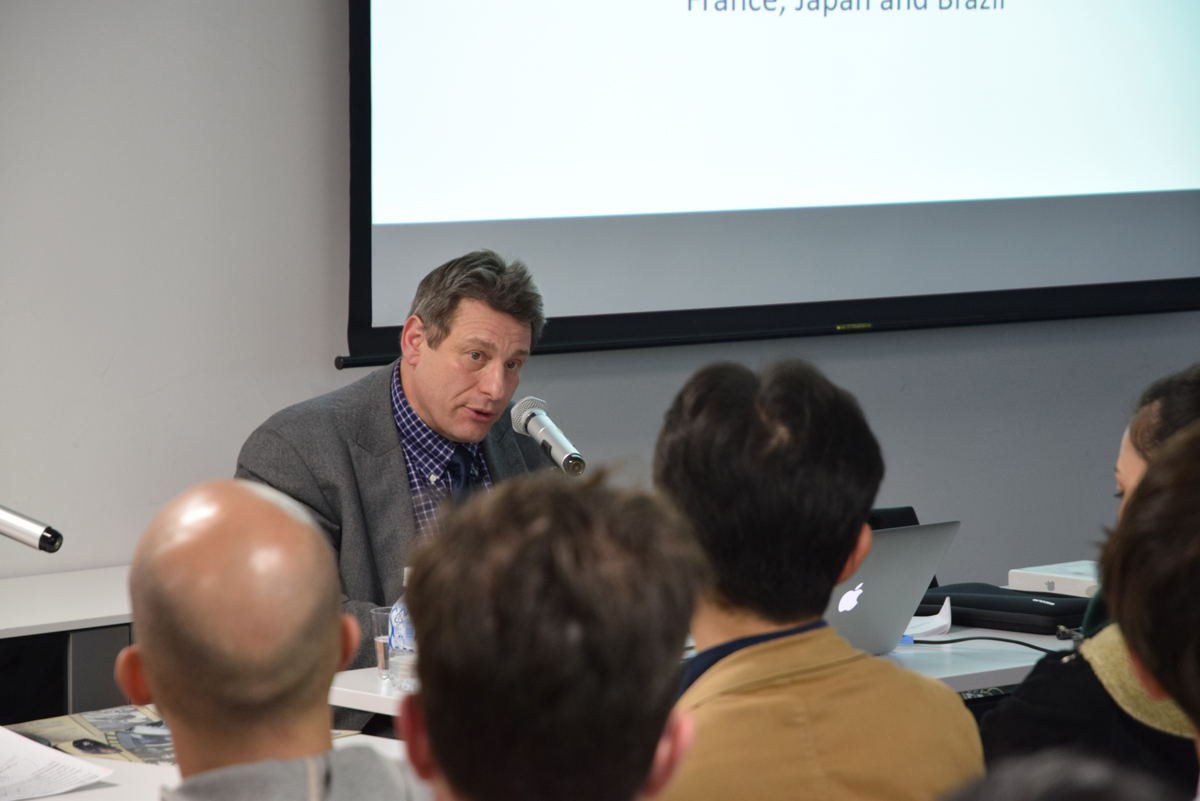Comparing the new cinemas of France, Brazil and Japan with Columbia University Professor Richard Peña
Fri, Jan 22, 2016-
Tags
On January 19, Waseda University’s Research Institute for Letters, Arts and Sciences invited Columbia University Professor Richard Peña to deliver a lecture on the new cinema movements of France, Brazil and Japan. The lecture, titled “Waves on Different Shores: Comparing the New Cinemas of France, Brazil and Japan,” was organized as part of Waseda’s Global Japanese Studies initiative and funded by the Top Global University Project (TGU). Professor Peña was greeted by a full house of students, researchers, and guests who came to hear from the film studies specialist.
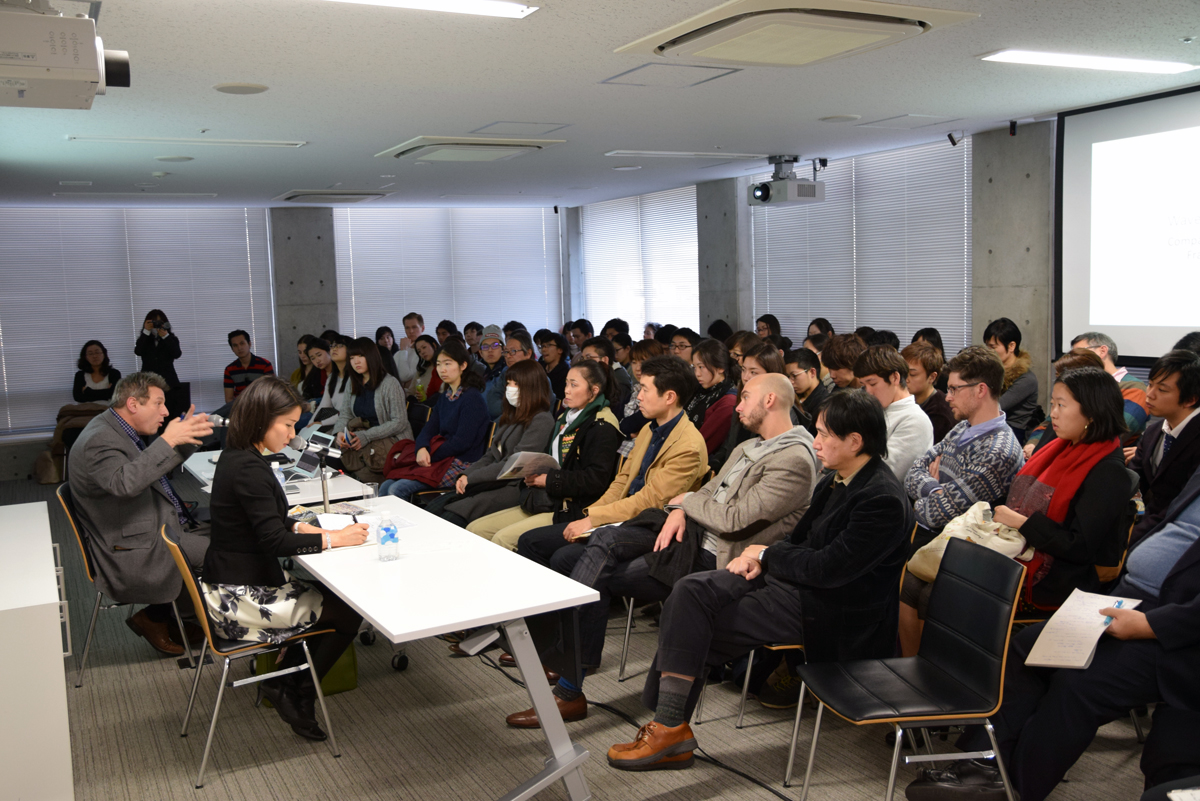
Professor Peña began his lecture by providing general information and context about new wave cinema movements, including the rise of auteur theory, which asserts that a film embodies a director’s personal artistic vision. “One could say that modern films are ‘art about art’ in that they make us conscious and aware of the process behind a given work of art,” said Peña.
Moving on to French New Wave cinema, Peña discussed the philosophies and techniques of French directors. In a conscious resistance to Hollywood cinema, French directors attempted to capture events as spontaneously as possible, using non-artificial “studios” with natural sound and light. Peña cited a scene from the 1962 Jean-Luc Godard directed film “Vivre sa via” that was shot in an actual Paris café. “As opposed to studio sets, Godard filmed in an actual café and moreover included the full sound scape of the bar. The bartenders pass back and forth, situating this fictional encounter within the confines of a physically authentic world.”
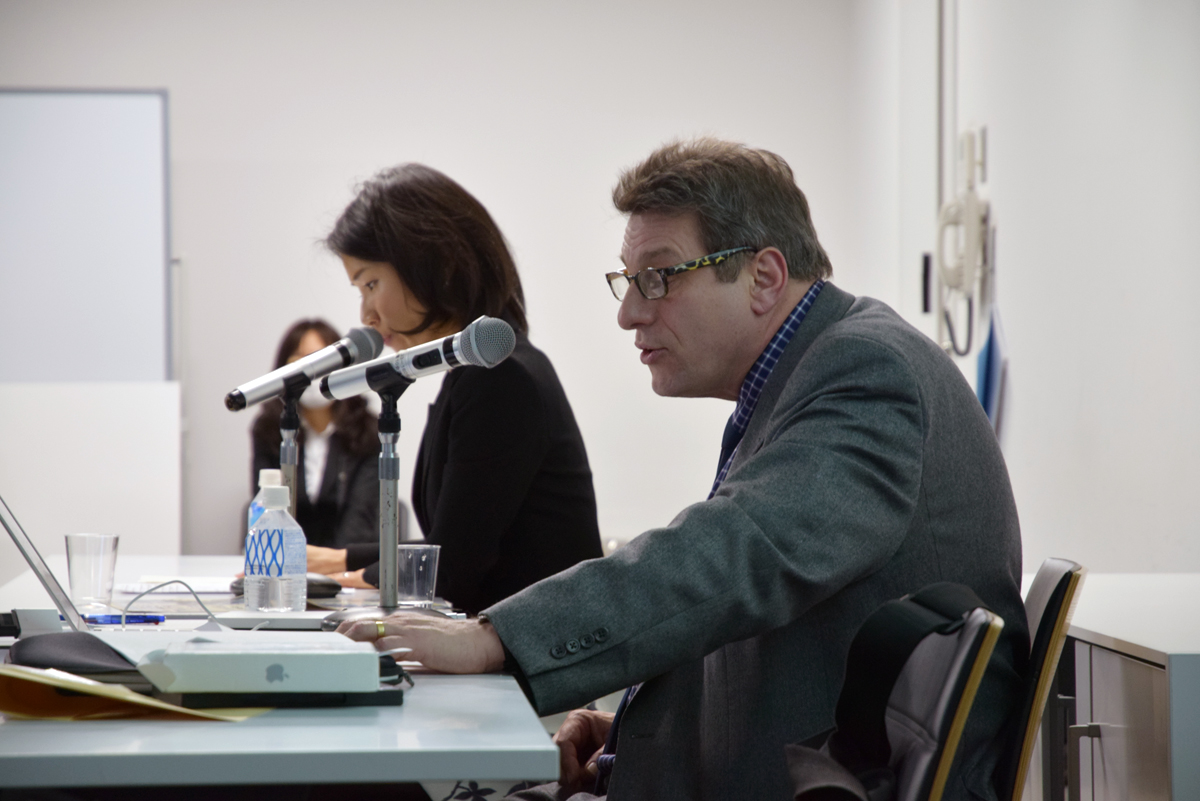
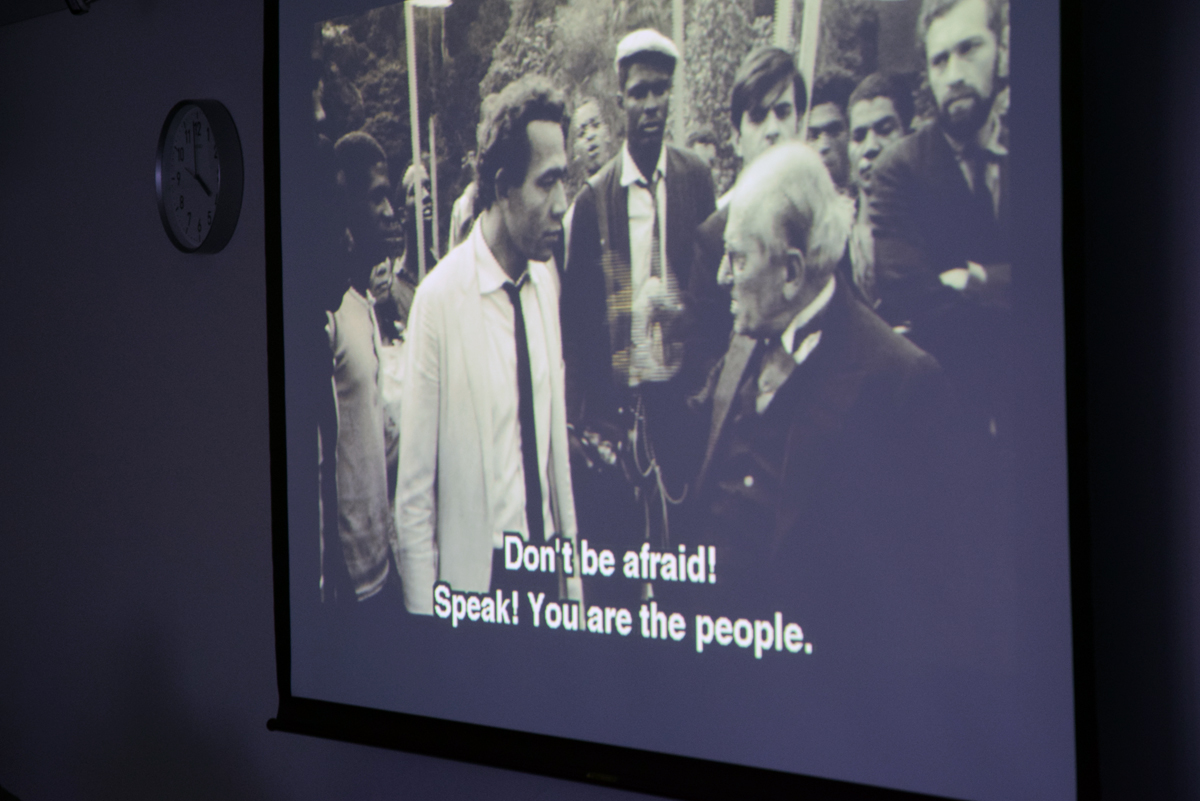
Peña explained that unlike the French New Wave, the Japanese New Wave began with film studios trying to attract younger audiences. One film to come out of this movement was “Season of the Sun,” directed by Takumi Furukawa and based on Shintaro Ishihara’s novel of the same name. Peña discussed how the American occupation influenced Japanese cinema and filmmakers to incorporate foregrounding cinematic techniques and exaggerated stylization in their films. “Shohei Imamura, who had actually served as an assistant director to Yasujiro Ozu once actually said when he began directing his own films, ‘I just tried to think of everything Ozu might do and I did the opposite.’” Peña showed a scene from the 1964 crime film directed by Masahiro Shinoda, “Pale Flower,” where the main character, a Yakuza hitman released from prison, kills a Yakuza boss in incredibly stylized fashion. Peña suggested that the pure stylization of Japanese New Wave corresponds to the 1960s student protest movement and Anpo security protests.
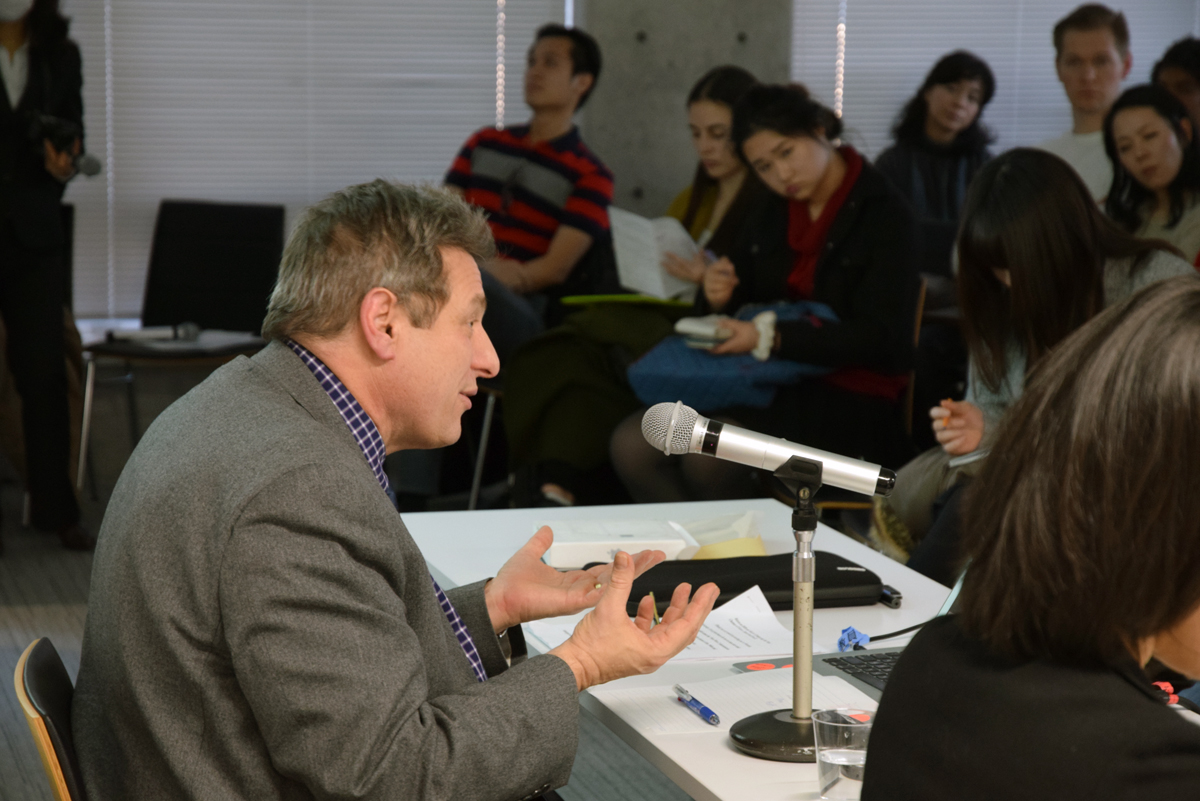
Peña closed his lecture by discussing the New Cinema movement of Brazil. Peña discussed how Brazil’s New Cinema began with the 1954 bankruptcy of Vera Cruz Studios, a highly commercialized production company that focused on creating American-esque films. He explained that following the bankruptcy, a new generation of directors began experimenting with independent cinema, rejecting the traditional studio filmmaking model. This new movement focused on unseen or ignored areas of Brazil and rejected classic forms of narration, resulting in a type of third world film “aesthetic.” Peña discussed how this cinematic movement corresponded with the rise of a radical bourgeois nationalism and the “construction of Brasilia” that led to the popularization of art forms such as bossa nova music and ended with the military coup of 1964.
